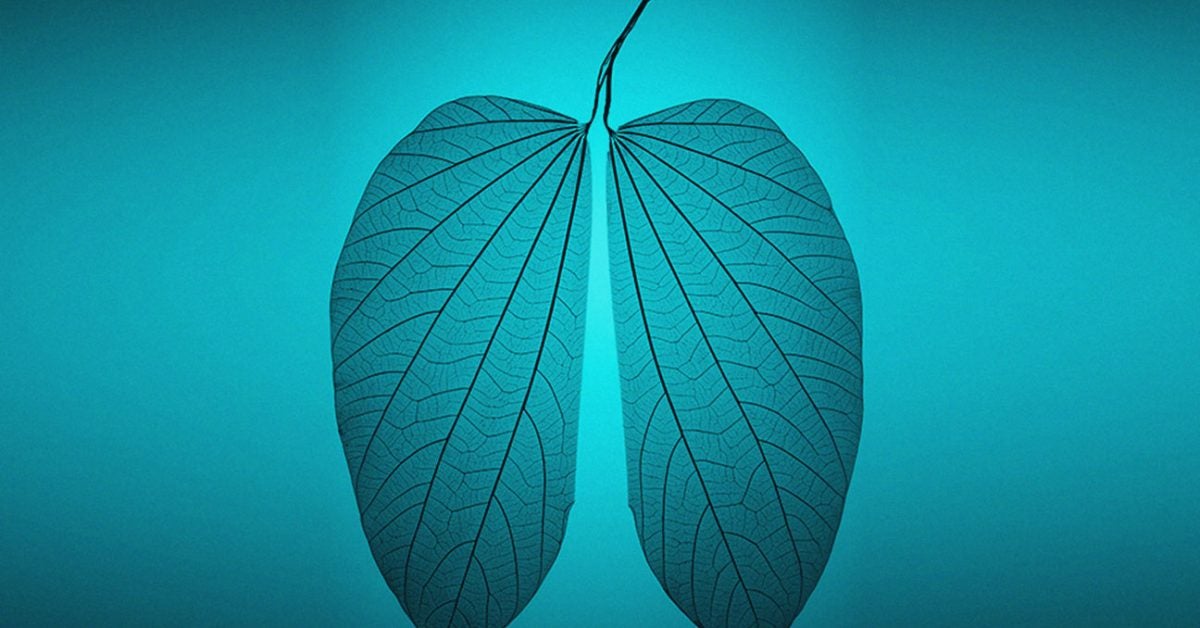Post Mortem Question: What is the diagnosis for this steer found dead at 85 days on feed? - Bovine Veterinarian
Post Mortem Question: What is the diagnosis for this steer found dead at 85 days on feed? - Bovine Veterinarian |
| Posted: 28 Apr 2021 10:39 AM PDT [unable to retrieve full-text content]Post Mortem Question: What is the diagnosis for this steer found dead at 85 days on feed? Bovine Veterinarian |
| What are common lung diseases? - Medical News Today Posted: 28 Apr 2021 02:10 AM PDT  Lung disease is a general term for several disorders that include airway diseases, lung tissue diseases, and lung circulation diseases, some of which may lead to respiratory failure. During the course of a day, a person generally takes a breath nearly 25,000 times. However, if a person is one of the millions in the United States who has lung disease, they may have difficulty breathing. Lung disease is a leading cause of death in the U.S. The three main categories of lung disease each encompass different diseases, including asthma, pulmonary fibrosis, and pulmonary edema. The lungs are an essential part of the respiratory system. When a person breathes, the lungs take in oxygen from the air and pump it through the body's airways and air sacs. The oxygen is then absorbed into the bloodstream and carried to the heart via the blood vessels. Doctors use the phrase lung disease or respiratory disease to describe the many different conditions that affect the respiratory, or breathing, system. There are three main categories of lung disease, and each affects the lungs in a different way:
Most common lung diseases fall into one or more of these three categories. Some of the most common diseases include:
Doctors tend to classify lung diseases according to the way they affect the lungs. However, the lungs are complex organs and respiratory conditions may involve more than one lung disease category. Airway diseases affect the airways that carry oxygen from the atmosphere into the body. They can make it hard for a person to breathe. They include: AsthmaWhen someone has asthma, their airway can become swollen and narrow, making it hard for the person to breathe and making them feel as though they cannot get enough air. Asthma events often happen after the person has been exposed to a "trigger" such as smoke, pollution, or pet hair. At least 25 million people in the United States have asthma. It is a chronic condition, meaning there is no cure. COPDCOPD thickens and damages the airways. Over time, this damage results in the lungs making more mucus than usual and clogging up the airways. The typical symptoms of COPD are:
Smoking tobacco is the leading cause of COPD. There is no cure for the condition, as it is a progressive disease that generally gets worse over time, especially if a person continues smoking. BronchiectasisBronchiectasis affects the small airways in the lungs, called bronchi. If a person has the condition, the walls of the bronchi become thick and swollen, which prevents the lungs from working efficiently. It can also lead to a buildup of excess mucus, which can lead to infections. Symptoms may include:
There is no cure, and the symptoms tend to get worse over time. Learn more about bronchiectasis here. ComplicationsPeople with airway diseases can have periods when their symptoms get worse, which can require hospital treatment. Some lung diseases affect the lung tissue, diminishing the amount of air entering the lungs. They include: Pulmonary fibrosisPulmonary fibrosis causes scarring of the lungs, which makes it difficult for the body to absorb sufficient oxygen into the bloodstream. The most common symptoms of pulmonary fibrosis include:
Learn more about pulmonary fibrosis here. SarcoidosisSarcoidosis is a condition that develops when a person's immune system cells clump to form granulomas. It can happen in any organ, but the lungs are most commonly affected. Symptoms include feeling tired or having a fever. Most people will get better, many without treatment. In some people, however, sarcoidosis can lead to permanent lung scarring. As with pulmonary fibrosis, this can make it difficult for the body to get the oxygen it needs. Learn more about sarcoidosis here. ComplicationsLung tissue disease can sometimes lead to long-term breathing problems. The lungs are full of blood vessels that absorb the oxygen from the air. If the vessels are damaged, it means the body may not get sufficient oxygen, and may have difficulty in getting rid of harmful carbon dioxide. These diseases include: Pulmonary hypertensionPulmonary hypertension is the most common lung circulation disease. It happens when high blood pressure damages the lung's blood vessels, which become stiff and narrow, causing the heart to pump harder. The symptoms can include:
ComplicationsThe possible complications of pulmonary hypertension can include:
According to the Centers for Disease Control, the five leading causes of death in the U.S. in 2019 included:
Lung disease is a leading cause of death worldwide. In 2008, lung infections, lung cancer, and COPD accounted for 9.5 million deaths worldwide. The lungs work with the heart to ensure the body gets the oxygen it needs. When a person breathes in, the lungs bring fresh air into the airways and air sacs. The oxygen in that air is absorbed into the bloodstream and pumped throughout the body by the heart, traveling through blood vessels to vital organs and tissues. The different types of lung diseases are generally classified based on whether they affect the tissue of the lungs, the airways, or the blood vessels in the lungs. Lung diseases are among the leading causes of death worldwide. |
| You are subscribed to email updates from "pulmonary hypertension causes" - Google News. To stop receiving these emails, you may unsubscribe now. | Email delivery powered by Google |
| Google, 1600 Amphitheatre Parkway, Mountain View, CA 94043, United States | |
Comments
Post a Comment